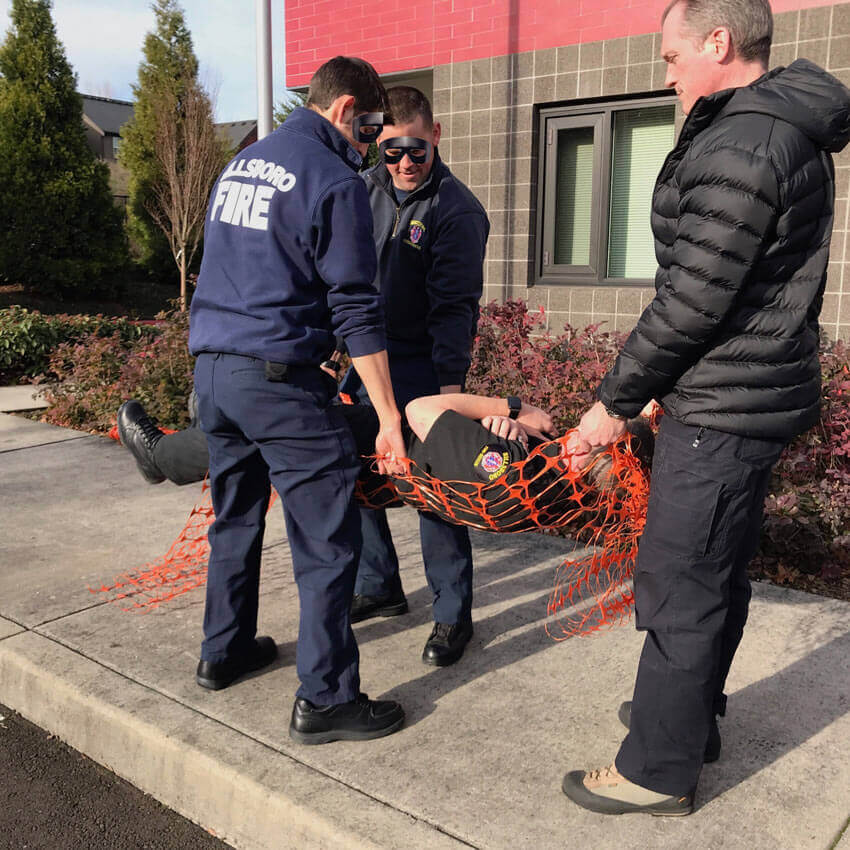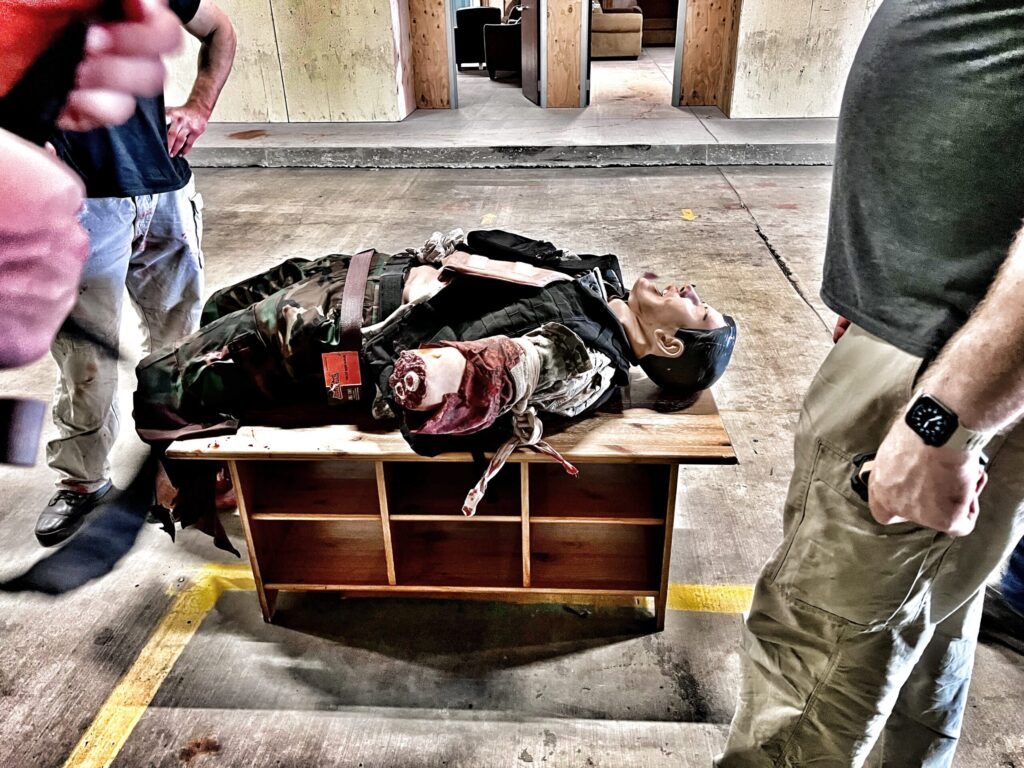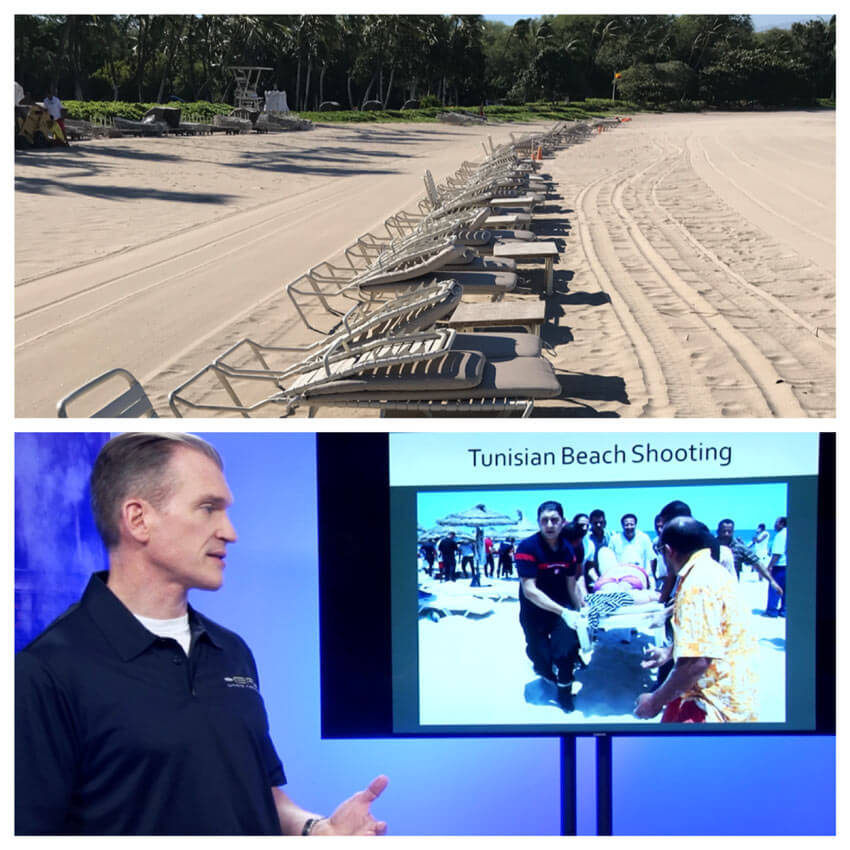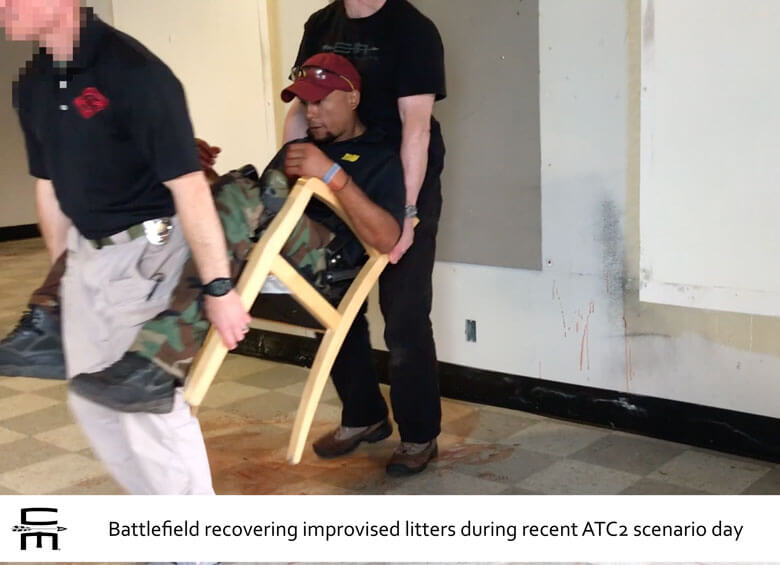
Improvised Litters
- Posted by Mike Shertz MD/18D
- Categories Casualty Movement, Improvised
🕖 Reading Time, 4 minutes
Creatively free-thinking under stress is extremely difficult. Learn to see improvised techniques in your every day environment and they will occur to you when you need them.
Construction Barrier
A very lightweight construction barrier is used as an improvised litter to carry a 185 pound casualty. It was flimsy enough it had to be folded on itself but then worked quite well.


A lightweight coffee table as a litter
Generally tables are going to be too heavy or awkward to use as improvised litters. However this one was quite light and portable, making it a good choice.

Improvised litter: Beach Lounge Chairs
A line of beach chairs is a line of improvised litters... Hoping never to need them, but it pays to be thinking about improvisation and battlefield recovery as we move through the world.

Standard chairs battlefield recovered as improvised litters
Carrying casualties is hard work. Finding something that is more ergonomic with which to carry them makes the process easier and faster. Running Tactical Casualty Care scenarios in a surprisingly well-furnished, but soon-to-be-demolished building gave us the opportunity to battlefield recover improvised litters from classrooms and offices.

Lightweight Pedestrian Barriers
Carrying casualties is hard work. Finding something that is more ergonomic with which to carry them makes the process easier and faster. All of London seems to be under construction and these plastic barriers are staged everywhere to block sidewalks and control pedestrian movement They'd also make a fine improvised litter for carrying casualties.

Carpet to improvised litter in 60-seconds
By cutting the carpet around the casualty, leaving enough room at the head and feet for either rolling the carpet on itself or, as here, cutting hand holds in it, a casualty can be drug by one rescuer, or carried by two rescuers. See also, https://www.crisis-medicine.com/carpet-to-improvised-litter-in-60-seconds/
[mc4wp_form id=”3383″]
Dr. Mike Shertz is the Owner and Lead Instructor at Crisis Medicine. Dr. Shertz is a dual-boarded Emergency Medicine and EMS physician, having spent over 30 years gaining the experience and insight to create and provide his comprehensive, science-informed, training to better prepare everyday citizens, law enforcement, EMS, and the military to manage casualties and wounded in high-risk environments. Drawing on his prior experience as an Army Special Forces medic (18D), two decades as an armed, embedded tactical medic on a regional SWAT team, and as a Fire Service and EMS medical director.
Using a combination of current and historical events, Dr. Shertz’s lectures include relevant, illustrative photos, as well as hands-on demonstrations to demystify the how, why, when to use each emergency medical procedure you need to become a Force Multiplier for Good.



